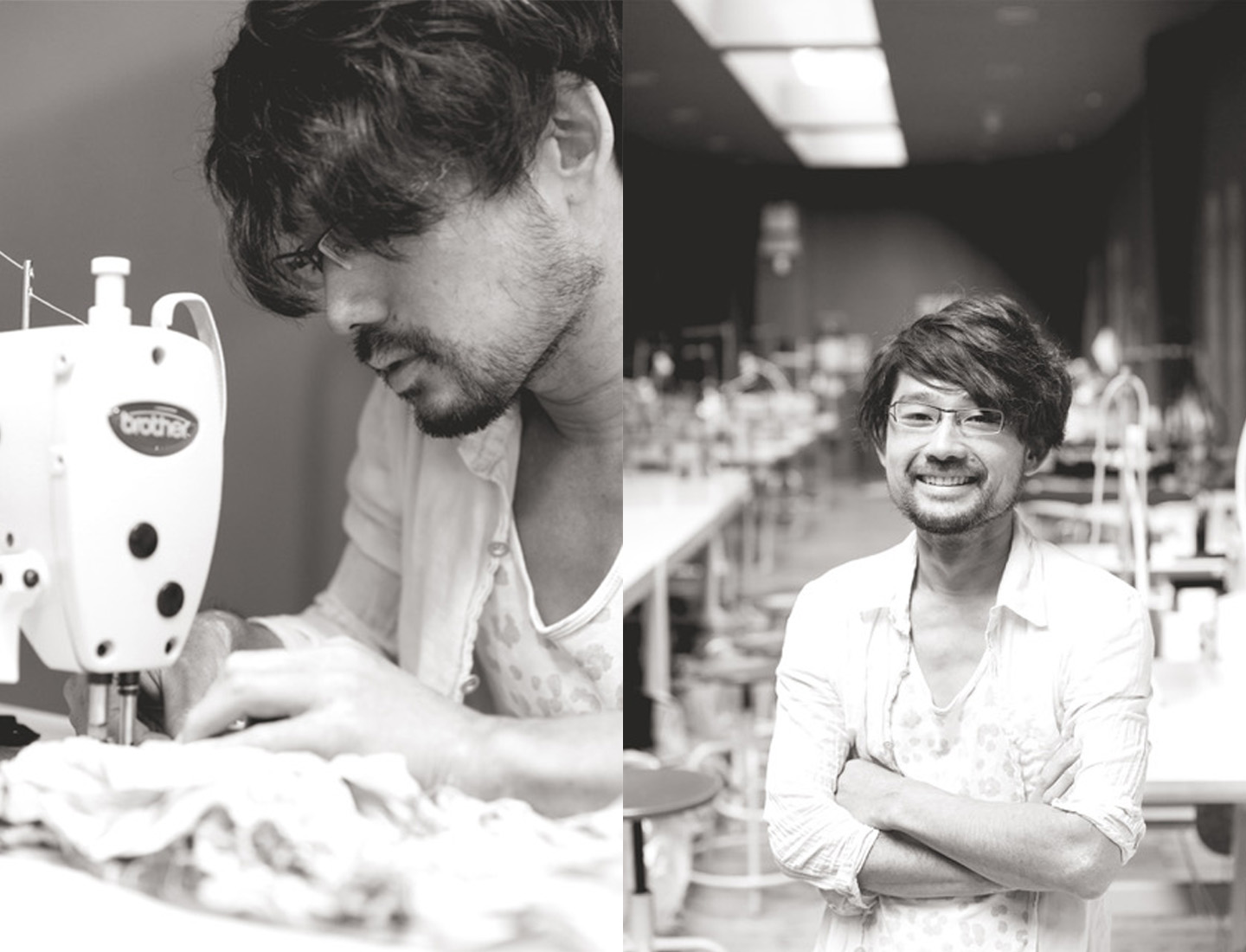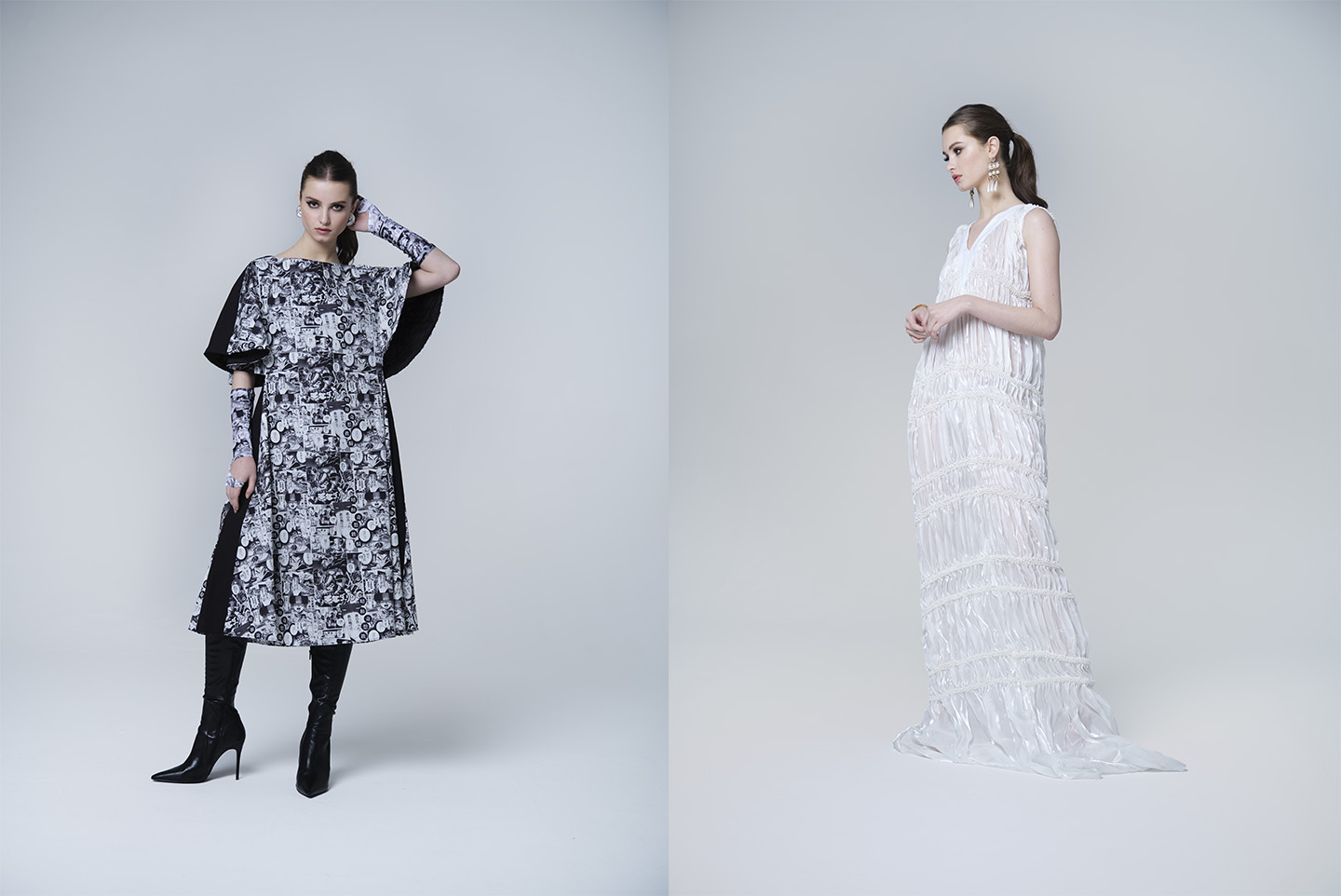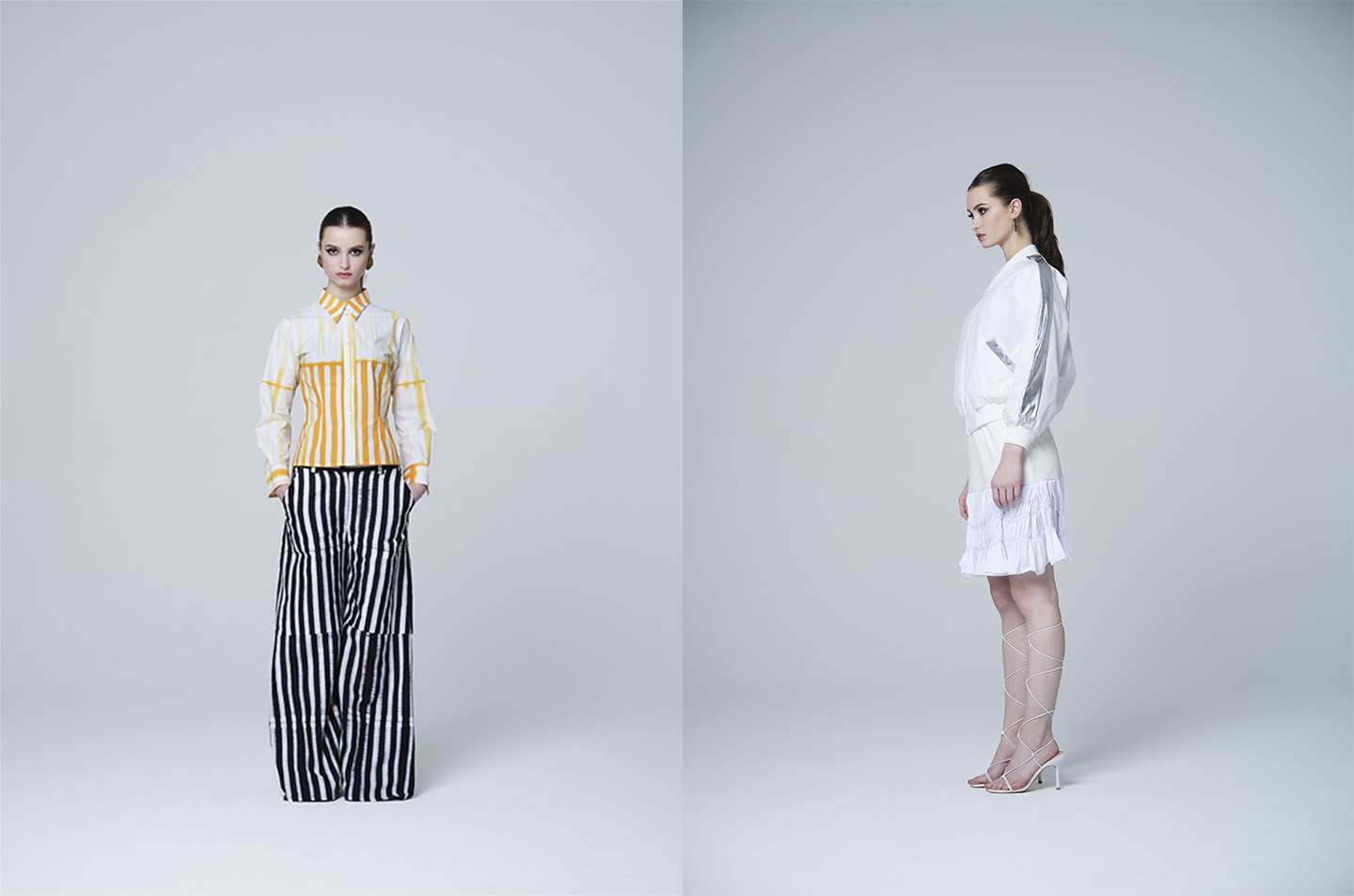

To combine traditional Japanese techniques with current design by reworking a classic art form with a modern twist: this is the aim of JU-NNA, the brand founded in 2019 by Istituto Marangoni London alumnus Jun Nakamura after completing his M.A. in Fashion Design Womenswear at the fashion school.

Istituto Marangoni London alumnus Jun Nakamura Drawing on his past working in the Japanese kimono industry and Tokyo Fashion, the designer incorporates the traditional Japanese Shibori into his collections, working with artisans in Asia to help preserve this valuable heritage.
Fashion as a matter of Fusion: here's how JU-NNA rocked the latest London fashion week calendar
JU-NNA debuted at London Fashion Week in February with their autumn-winter 2022/23 collection, called Fusion.
Ju-nna autumn-winter 2022 collection The season blended the femininity of previous collections with a distinct streetwear element.
As with all his collections, creative director Jun Nakamura continued to incorporate the traditional Japanese Shibori technique into his garments, resulting in visually striking and distinctive pieces.

Looks from Ju-nna autumn-winter 2022 collection. From left to right, Abigail dress and Kerry gloves; Sophie dress «Shibori was invented for the tie-dye effect. However, I use it for creating 3D shapes, which is a by-product of Shibori, especially on vibrant prints. We work closely with specialised artisans in Asia who are motivated to create innovative designs using this technique», Nakamura explained.
Jun Nakamura's collections preserve the heritage of Japanese handicraft techniques
Shibori is a traditional Japanese craft used primarily for kimonos. Artisans bind small areas of fabric by hand using thread to create small pinched sections. It is a very time-consuming process, and the result is exceptionally stunning.
Artisans used to start practising this technique from their childhood and have preserved their heritage. This tradition, however, is now in danger of extinction due to the decreasing demand for kimonos and artisans’ age.


Looks from Ju-nna autumn-winter 2022 collection. From left to right, Gemma shirt and Naomi trousers; Courtney jacket and Louise skirt With his collections, Jun Nakamura aims to help preserve this precious heritage.
«We want to produce and introduce unique garments using this traditional technique and contribute to preserving its heritage. Many traditional handicrafts are facing threats of extinction nowadays», Nakamura said. «I believe that creating a new design gives a new birth to the tradition and helps it continue. We love handicrafts and would love to show exciting designs using those long-standing techniques».
From Shibori to 3D, vibrant prints, the future of JU-NNA fashion is the ultimate balance of tradition and innovation
JU-NNA works with artisans and innovatively processes Shibori onto printed fabrics, which is a new challenge for artisans. The focus is on the 3D shape Shibori creates and the striking aesthetics achieved by combining Shibori patterns and prints.
Shibori also gives fabrics a unique trait. Woven fabrics become like a jersey and its stretchy quality also makes wearers feel very comfortable.
«We will go to London Fashion Week again in September with our spring-summer 2023 collection», Jun Nakamura revealed.
Clementina Bianchi
Editor


